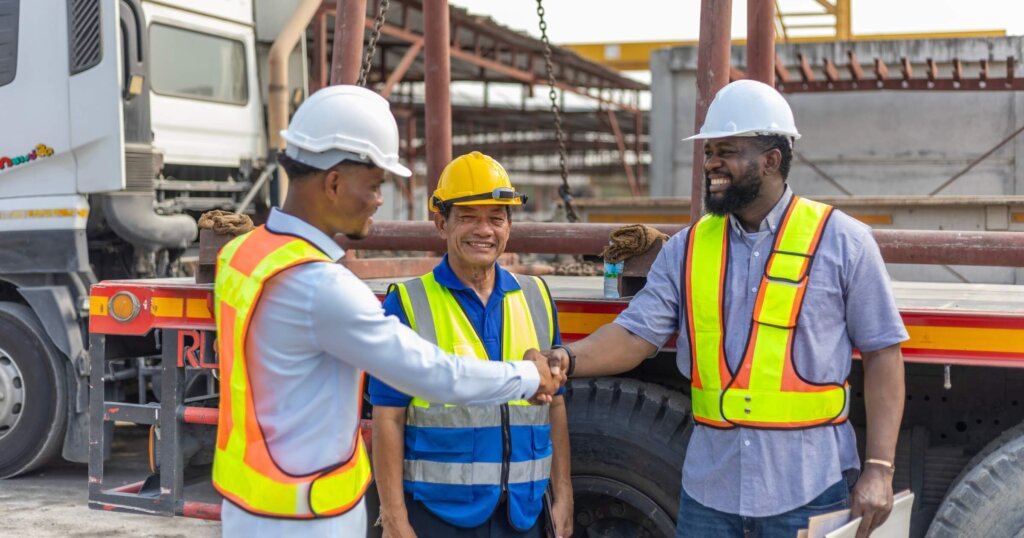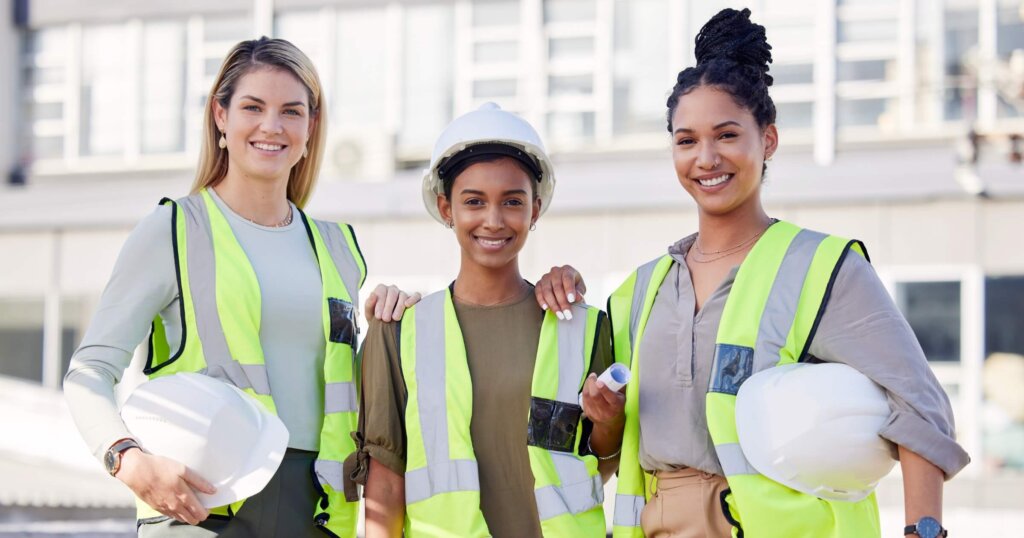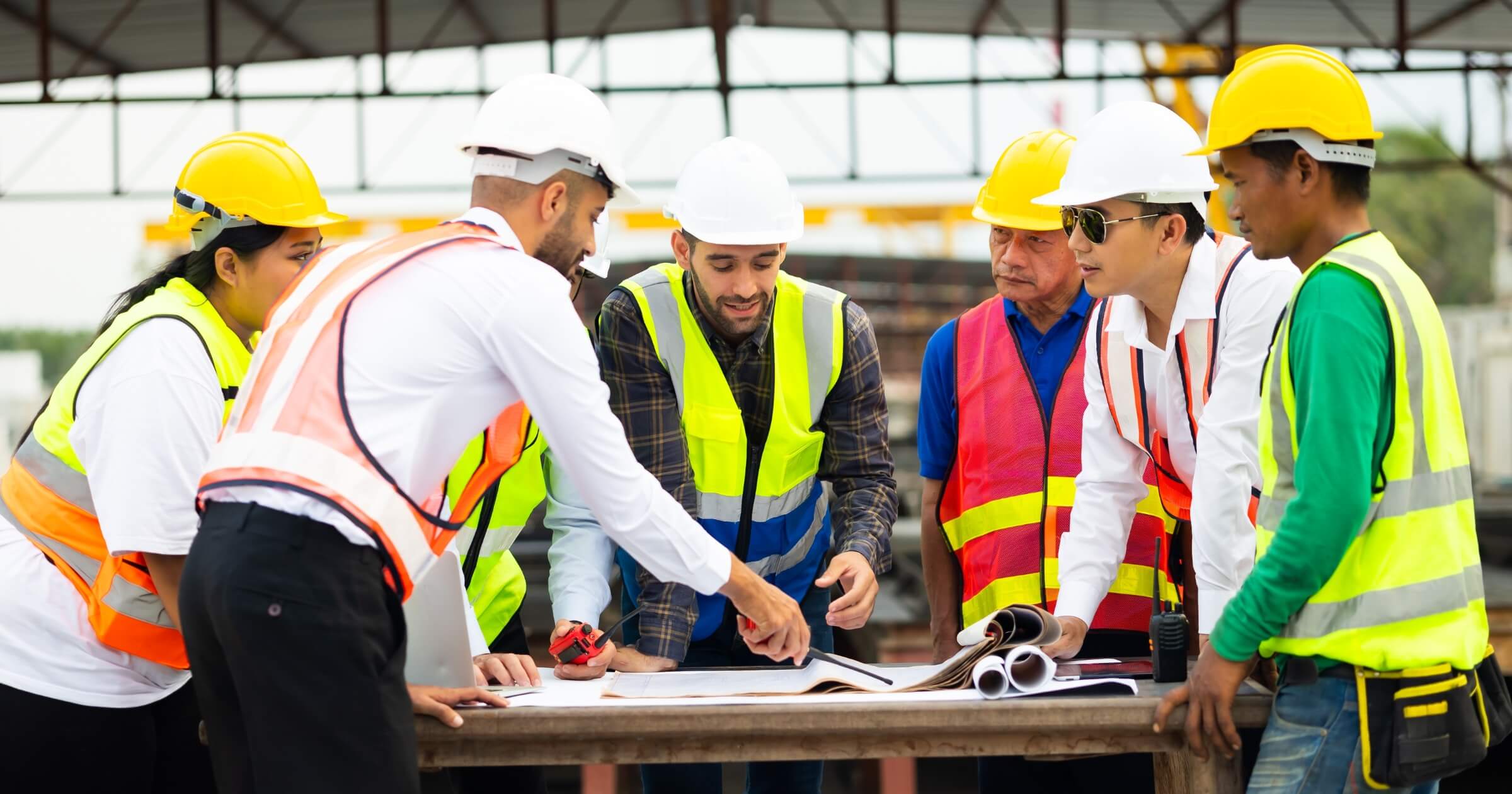The disparity between White men and minority groups in the workforce is significant across almost every industry. Slowly but surely, AEC companies are employing more equitable hiring practices and policies; not only because it’s ethical, but to meet the growing labor demands. Here’s how minority groups and corporations are actively bridging the construction’s diversity gap and reshaping the workforce for the future.
Current landscape & labor demand
It’s no secret that the trades and the greater AEC space are experiencing a labor shortage. This is due to a number of factors, including:
- The skilled workforce is aging out: Many skilled tradespeople are approaching retirement. By 2030, US manufacturing businesses will require an extra 2.1 million workers to meet the labor demand. By 2028, approximately 700,000 skilled tradespeople in Canada are expected to have retired.
- Education barriers: A lack of workers also means a shortage of apprenticeship teachers, leaders, and mentors at vocational schools. This means long training waitlists, and new workers are left with limited options for entering the industry.
- Stereotypes and negative stigma: Many younger millennials and Gen Z workers perceive the trades to be “lesser” or “not prestigious”, opting for white-collar work instead.
The labor gap continues to widen, and demand for new housing and construction remains high. Diversity in the construction workforce has been recognized as a key driver in mitigating this growing issue. And AEC companies and training programs are opening doors that have been previously shut.
Under‑represented groups

Photo courtesy of Shutterstock.com
Racial minority groups like Black, Asian, and Indigenous peoples are greatly underrepresented in the trades, particularly in specialized or leadership roles. In the United States, only 6% of construction workers are Black, while they represent 14% of the entire population.
In Canada, Indigenous people represent more than 5% of the population, but their representation in transport, trades, and equipment operation roles is only about 3%. A lot of the cause for the underrepresentation of these groups comes down to a toxic culture that persists in the industry. Attracting minority workers and fostering opportunities more equitably begins with supporting progressive groups and programs, as well as changing the work culture to be more inclusive.
Women in trades: representation & trends

Photo courtesy of Shutterstock.com
Much like with racial minority groups, women are underrepresented in the trades because of a historically male dominated culture. While the gender disparity is slowly getting better, the representation of women in the trades remains low overall.
From the beginning of 2020 to March 2022, the number of roles in construction held by women increased by 7%, with women representing 8.3% of skilled tradesworkers. Some sources, however, indicate that this figure is lower, with many organizations stating women only make up 1 in 20 people in the trades.
Women are being increasingly drawn to the trades for job stability, wages that are on par with other white-collar roles, and entrepreneurial opportunities.
Immigrants: Integration & barriers
How many immigrants work in construction? According to the Canadian Apprenticeship Forum, more than 1 in 5 people in the Red Seal trades workforce are immigrants, translating to 379,100 people in 2021. And in the United States, nearly 25% of construction workers are immigrants. Hispanic workers in particular make up 30% of blue-collar construction workers, according to CPWR.
Many immigrants take on labor jobs as newcomers to Canada and the United States. However, they still face barriers in terms of credential recognition, language barriers, lack of promotion opportunities, and unequal pay. Many companies use immigrant status workers as a means of cheap labor, but to retain these workers and afford them the dignity they deserve, these barriers need to be broken down.
Youth involvement: growth & pathways
Attracting more young people will also be integral to repairing the labor shortage. Skilled trades programs in North America are increasingly working with schools and trade shows to showcase the modern, technically-involved work environments.
By highlighting the stability, high pay, intellectual challenge, and tech work that comes with the trades, the stigma associated with the industry is dispelled, and more young workers are inclined to join the field.
Driving diversity in construction: programs & initiatives
There has been an increasing number of programs popping up with the mission of championing diversity and creating more equitable pathways for minority groups. Some programs are dedicated to specific areas of the trades, while others more broadly support the AEC space. Some programs include:
- AEC Unites: Facilitates opportunities for Black working professionals and Black-owned businesses.
- Trade Winds to Success: Provides program opportunities specifically for Indigenous students and workers.
- K5T Community-Led Apprenticeship Development Program: Supports Indigenous workers pursuing careers in the trades
- Women Building Futures: Offers free programs and training for women and gender-diverse people looking to join the trades.
Challenges & persistent barriers
Many of the barriers that have caused the labor shortage in the first place are also barriers to making the trades industry more diverse. Here’s what slows the path to an equitable workforce and continues to deepen the labor issue.
- Toxic work environments and a lack of inclusivity: The trades have long been known to be a “man’s” field. The culture in the industry has often failed to promote inclusivity and safety for marginalized identity groups.
- Lack of mentor support: Because the labor shortage is already apparent, there’s a lack of available mentors for newcomers or minorities. Especially when it comes to support for leadership roles.
- Little to no networking opportunities: Programs championing diversity are ramping up, but the progress is slow, and finding job opportunities in supportive environments can be difficult.
- Stigmatizing mental health: The construction industry, in particular, has the highest suicide rate for workers of any other field. This is in large part due to the toxic culture and lack of psychological safety in the industry.
The trades industry has a lot of work to do to rebrand and make it safer, comfortable, and inclusive for everyone. Once a more consistent and conscious effort is made to overcome the above barriers, a new wave of workers from all identities will be more inclined to enter the trades, thereby resolving the growing labor issues.
Opportunities & outlook for 2025 and beyond
By supporting, uplifting, and funding impactful diversity programs designed to reshape an equitable future, we can see a better outlook for the industry in the long run. Lasting change also comes from the site itself, and workers and employers alike can make an effort to be more inclusive, supportive, and welcoming to all identity groups.
Employers should partner with diversity-focused programs in their region and implement sensitivity training, as well as provide other DEI resources to workers on-site. Truly committing to making diversity a priority on site will take work from everyone, but it is necessary to take the industry from toxic to inclusive.
Loved this article on AEC diversity? Check out these articles that spotlight opportunities in the industry.
- How Tia Perry and AEC Unites facilitate opportunities for Black construction professionals
- The female-owned construction companies you need to know about
- 10 strategies to boost employee retention in construction
- Jennifer Suerth on innovation and inclusion in the future of construction
And don’t forget to follow us on LinkedIn and subscribe to the newsletter to stay in the loop about all things AEC.



